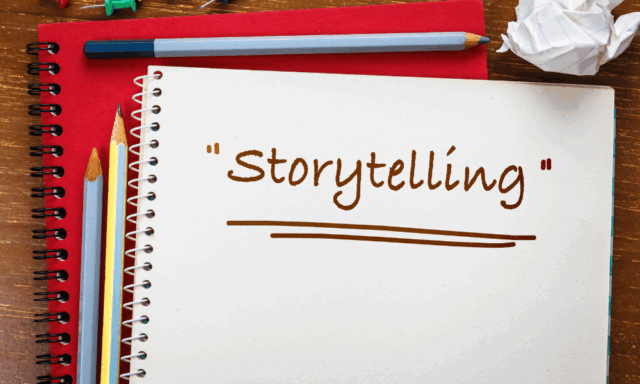“Storytelling” has become one of the most frequently invoked and least interrogated concepts in marketing.
Without a doubt, storytelling is effective. This fact is well-researched, but you don’t have to be a neuroscientist to understand why it works. It’s our oldest medium for knowledge transmission, and the most natural way to share our experiences with others. While the context of storytelling changes, the backbone of why it works has always been the same.
In marketing, you probably can’t go a single day without hearing or seeing the term. It’s everywhere: in pitch decks, in creative briefs, in job descriptions. Every day, the term is invoked to frame campaigns, justify copy choices, and elevate messaging. Somewhere along the way, the word began to feel less like a craft and more like a placeholder.
As we continue to reference storytelling in nearly every context, we should pause and ask: What exactly is a story, and are we actually telling one?
Strategic Narrative or Semantic Crutch?
In the early 2000s, brand storytelling gained traction as a response to the limits of transactional marketing. Emotion, identity, and purpose became core differentiators, and marketers rightly recognized that stories that are structured, character-driven, and emotionally resonant could forge stronger customer relationships than features ever could.
A compelling story helps brands make an impact far beyond product specs. But as more brands pounced on the trend, “storytelling” became a kind of universal solvent: An all-purpose term applied to blog intros, product announcements, sales decks, and feature releases, regardless of whether those pieces embodied the elements of a story.
The Dilution of a Useful Idea
Marketers often turn to storytelling because it promises cohesion and memorability. It’s a tool for connecting with audiences in a way that feels grounded and real. The emotional power of storytelling is also what makes it easy to misuse. We want our messages to resonate, so we reach for the language of story even when the underlying structure isn’t there. It’s the equivalent of using cinematic lighting on a product photo: Dramatic and compelling, but not necessarily truthful.
At its core, a story involves more than just a beginning, middle, and end. It has change, stakes, and ideally, a protagonist whose arc mirrors that of the customer, community, or culture. It creates meaning, not just context. When every piece of content is described as a story, the word loses its specificity and power. Sometimes a narrative doesn’t tell a story.
Too often, what’s labeled storytelling is simply an explanation with tone. A friendly voice, a brief anecdote, or a list of values may feel story-adjacent, but they don’t deliver the structural or emotional payoff that real narrative provides. These elements simulate storytelling without having a story to tell.
Why Marketers Should Care
This matters not just because the term is overused, but because we risk undervaluing the strategic potential of real narrative work. If we treat “storytelling” as synonymous with “content,” we stop demanding rigor from our creative process. We lose sight of what makes stories effective: clarity, conflict, transformation, and resonance.
For marketing teams, this means more than semantic accuracy. When we tell clients or stakeholders that we’re “telling a story,” we should be clear about what kind. Think about the most effective storytelling you’ve seen in a campaign. You probably remember how it made you feel. Stories have genres, plots, surprises, and meaning. Are we reflecting that in our campaigns? Are we guiding audiences through a transformation? Framing a problem and resolution? Precision in language leads to precision in execution. In a field that merges strategy and creativity, that distinction matters.
Intentional Storytelling Still Works
This isn’t to say that brands should abandon storytelling. Why dump something that works? Rather, the point is that it should be used more deliberately. A thoughtful narrative can still differentiate a brand, build emotional equity, and drive long-term engagement. We even have a guide on making that happen! But it works best when it’s treated as a craft, not the default.
That means making sure your stories reflect moments where true narrative elements are present. It also means embracing other modes of communication: Explaining, persuading, or instructing, to convey ideas to consumers. Not every message needs to be a story to be compelling.
Storytelling remains one of marketing’s most powerful tools, but it’s not a stretch to say that the term has been repeated so much that it’s losing its meaning. As the term and tactic continues to expand in usage, marketing creatives should revisit its purpose, clarify their intent, and consider whether their work reflects narrative thinking or simply narrative language.





